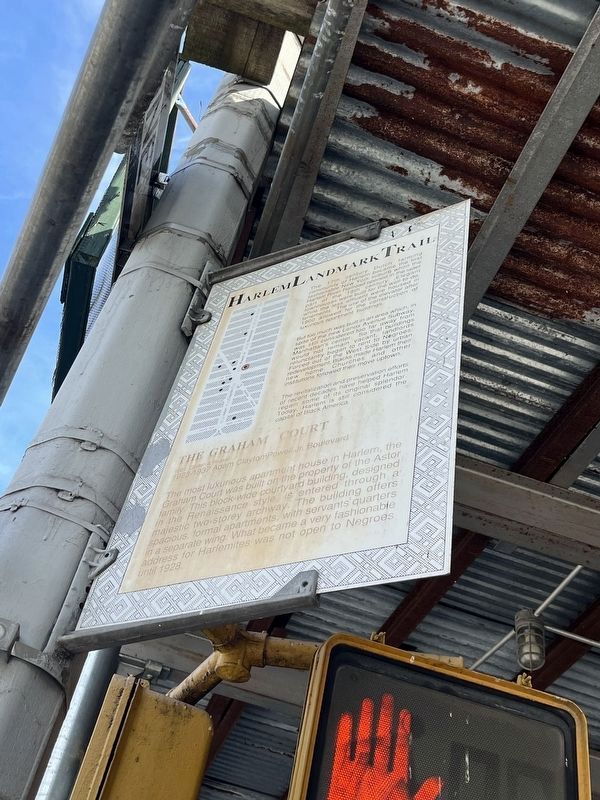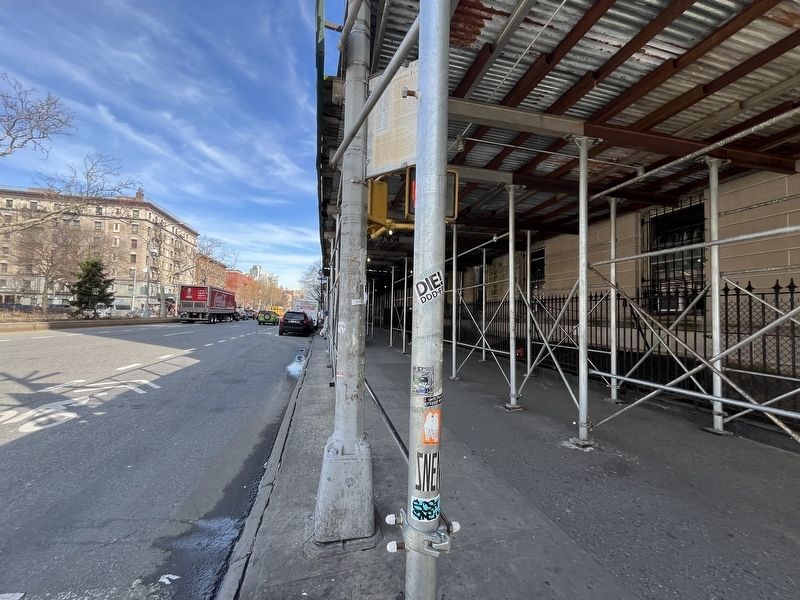Central Harlem in Manhattan in New York County, New York — The American Northeast (Mid-Atlantic)
Harlem Landmark Trail
The 17th century Dutch farming community of Harlem became the first fashionable New York suburb when the Harlem River Railroad opened in the latter part of the 19th century. Elegant townhouses were built for the well-to-do, while the less affluent were housed in tenements. The use of the elevator after 1900 allowed for the construction of luxurious apartment buildings.
But too much was built in an area which, in spite of the new Lenox Avenue Subway, was still considered too far away from Manhattan's center. So that buildings would not remain vacant, landlords reluctantly began to rent to Negroes. Forced out of the West Side by urban redevelopment, Blacks made Harlem their new home. Churches and other institutions followed their move uptown.
The revitalization and preservation efforts of recent decades have helped Harlem regain some of its original splendor. Today, Harlem is still considered the capital of Black America.
The Graham Court
1901 Clinton & Russell
1923-1937 Adam Clayton Powell, Jr. Boulevard
The most luxurious apartment house in Harlem, the Graham Court was built on the property of the Astor family. This block-wide courtyard building, designed in the Renaissance style, is entered through a majestic two-storey archway. The building offers spacious, formal apartments, with servants' quarters in a separate wing. What became a very fashionable address for Harlemites was not open to Negroes until 1928.
Topics. This historical marker is listed in these topic lists: African Americans • Architecture • Railroads & Streetcars • Settlements & Settlers. A significant historical year for this entry is 1900.
Location. 40° 48.199′ N, 73° 57.133′ W. Marker is in Manhattan, New York, in New York County. It is in Central Harlem. Marker is at the intersection of Adam Clayton Powell Jr Boulevard and West 116th Street, on the right when traveling north on Adam Clayton Powell Jr Boulevard. Touch for map. Marker is at or near this postal address: 191 W 116th St, New York NY 10026, United States of America. Touch for directions.
Other nearby markers. At least 8 other markers are within walking distance of this marker. Graham Court Apartments (a few steps from this marker); A. Philip Randolph Square (within shouting distance of this marker); GreenThumb (about 500 feet away, measured in a direct line); Houdini (approx. ¼ mile away); Martin Luther King Jr. Playground (approx. ¼ mile away); a different marker also named Martin Luther King Jr. Playground (approx. ¼ mile away); Lafayette-Washington (approx. 0.3 miles away); Morningside Park (approx. 0.3 miles away). Touch for a list and map of all markers in Manhattan.
Credits. This page was last revised on March 11, 2024. It was originally submitted on March 11, 2024, by Devry Becker Jones of Washington, District of Columbia. This page has been viewed 33 times since then. Photos: 1, 2. submitted on March 11, 2024, by Devry Becker Jones of Washington, District of Columbia.

